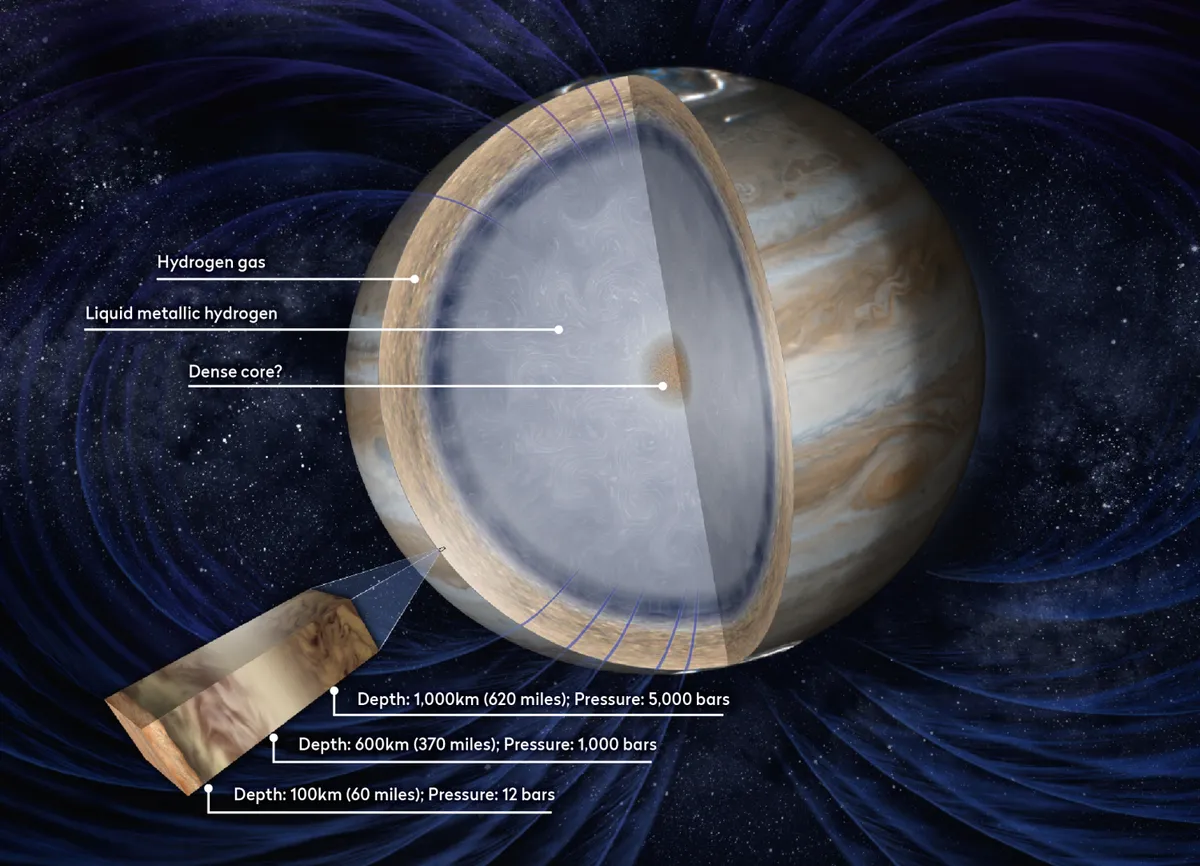The short answer is that Jupiter's temperature is about –110°C / –166°F. That’s if you were standing on the planet’s surface, which of course you can’t.
Jupiter is composed mostly of gases and liquids, so there’s no surface to stand on.
Instead, we can only talk about the temperature of Jupiter at the point where the atmospheric pressure is equal to one bar here on Earth.
But the lack of any solid ground to stand on is only part of the problem when it comes to talking about the temperature of Jupiter.

What's warming Jupiter?
Unlike Earth, most of Jupiter’s heat doesn’t come from the Sun – it’s too far away.
Instead – some residual heat from the planet’s formation notwithstanding – it’s mostly generated as a result of the many different chemical and physical interactions going on between the planet’s various constituent elements.
As a result, the temperature of Jupiter varies depending whether you’re talking about the temperature in the upper reaches of the Jovian atmosphere, the temperature at ‘surface’ level (see above!) or the temperature deep inside the planet.

Jupiter's varying temperatures explained
Above the ‘surface’, Jupiter's temperatures drop off rapidly, so 50km up you’d be looking at a temperature of –160°C, which would of course be much too cold for humans to survive!
Higher up in the atmosphere, where hydrogen dominates over helium, temperatures begin to rise once more.
At the very top of Jupiter's atmosphere, some 1,000km above the ‘surface’, temperatures can reach a positively toasty 1,000°C, much too hot for humans to survive.
At this level, some heating is also caused by the turbulence of the Great Red Spot, the cyclonic storm that has raged above Jupiter’s southern hemisphere for centuries.
The Great Red Spot itself, meanwhile, is actually cooler than the other clouds around it, as infrared readings taken by NASA’s Juno spacecraft have revealed.

Conversely, were you to bury deep into the planet from our hypothetical 1-bar level, temperatures would also rise rapidly.
Indeed, a few tens of kilometres down the temperatures on Jupiter could be quite comfortable for humans.
It’s just that the lack of oxygen and the phenomenal atmospheric pressure would kill you long before you had time to appreciate them!
Go deeper, to a depth of 600km, and temperatures can reach many thousands of degrees.
